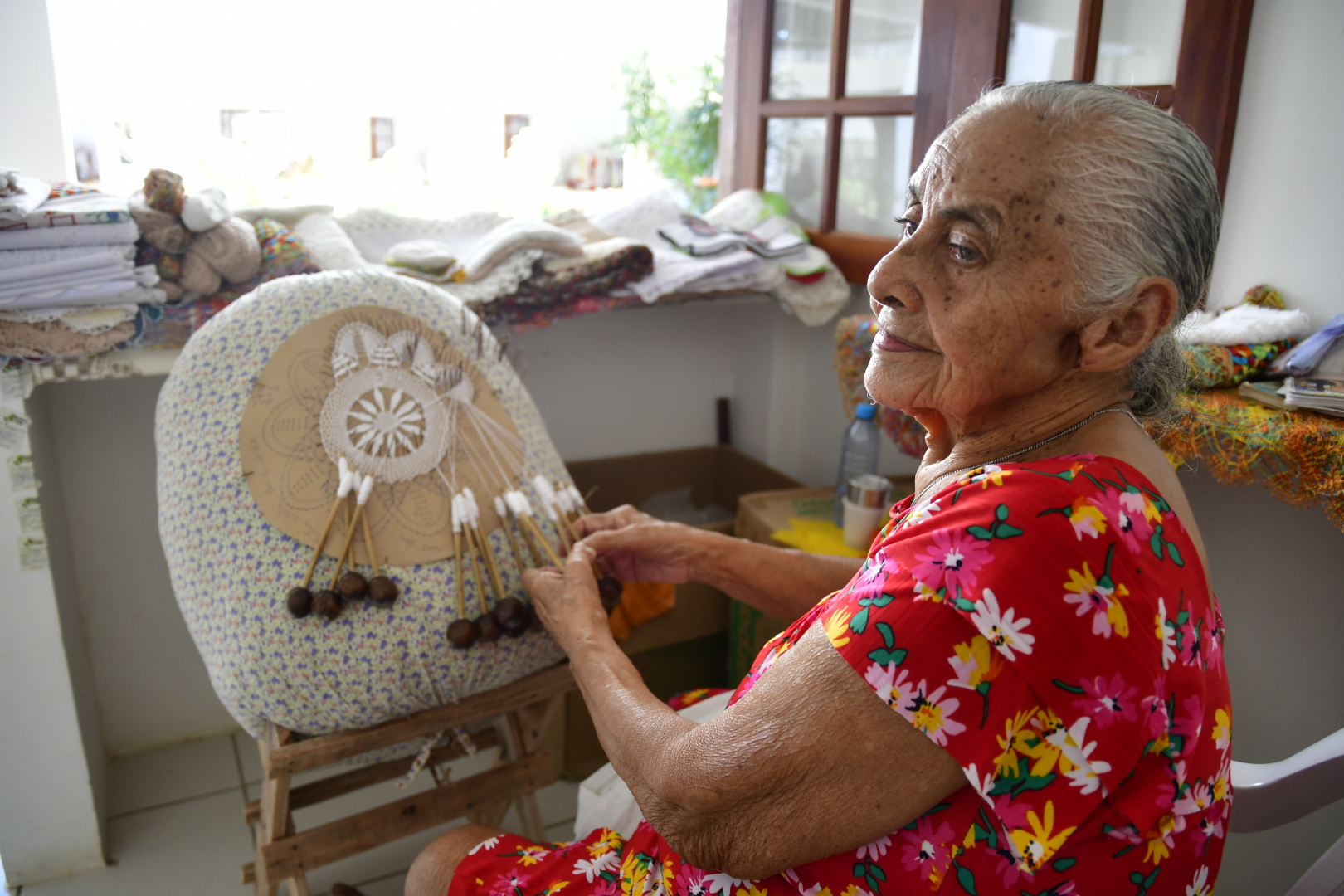Handwerk
Handarbeit als Therapie: Die Vorteile des Schaffens für die psychische Gesundheit
Entdecken Sie die therapeutische Wirkung von Handarbeit. Erfahren Sie, wie kreative Tätigkeiten Ängste abbauen, die Stimmung heben und das emotionale Wohlbefinden durch praktische Projekte fördern können.
WERBUNG
Die Verbindung von Geist und Körper beim Handwerk

Handarbeit verbindet Geist und Körper in einem harmonischen Zusammenspiel von Kreativität und Entspannung. Es ist mehr als nur das Herstellen von Dingen – es ist eine Praxis, die das seelische Wohlbefinden fördert.

Machen Sie Ihr Handwerk zu Geld
Entdecken Sie die Geheimnisse, wie Sie mit Ihrem Handwerk Geld verdienen. Entdecken Sie praktische Strategien, um Ihre kreative Leidenschaft in ein profitables Unternehmen zu verwandeln.
Beim Handarbeiten gerät das Gehirn in einen Flow-Zustand, in dem Stress abnimmt und die Kreativität aufblüht.
Diese Synergie zwischen Aktivität und Präsenz fördert die psychische Gesundheit auf tiefgreifende Weise. Und hier werden Sie entdecken
Vorteile des Handarbeitens für Ihr Wohlbefinden
Handarbeit bietet unglaubliche Vorteile für die psychische Gesundheit, die weit über den bloßen Genuss hinausgehen. Sie kann ein wirkungsvolles Mittel sein, um das allgemeine Wohlbefinden und die Lebensqualität zu verbessern.
Von Stressabbau bis Stimmungsaufhellung – Basteln nutzt das therapeutische Potenzial der Kreativität.
Das Erschaffen von etwas mit den eigenen Händen fördert ein Gefühl der Leistung und der persönlichen Erfüllung.
Handarbeiten fördern zudem den emotionalen Ausdruck und bieten ein Ventil für Gefühle, die sich sonst nur schwer in Worte fassen lassen. Es ist eine sinnvolle Möglichkeit, mit sich selbst und den eigenen Emotionen in Kontakt zu treten.
Im Folgenden sehen wir uns genauer an, wie Sie davon profitieren können!
Stressabbau
Handarbeit bietet eine wohltuende Auszeit vom Alltag. Tätigkeiten wie Stricken, Malen oder Bildhauerei können den Stresspegel deutlich senken.
Die sich wiederholenden Bewegungen vieler Handarbeiten, wie etwa das rhythmische Stricken oder die sanften Pinselstriche beim Malen, erzeugen eine meditative Wirkung, die den Geist beruhigt. Dies kann zu einer spürbaren Verringerung von Angstzuständen führen.
Handarbeiten in den Alltag zu integrieren, hilft, den Fokus von Stressfaktoren abzulenken und Entspannung zu fördern. Das Erfolgserlebnis nach Abschluss eines Projekts trägt zusätzlich zum Stressabbau bei.
Um Stress optimal abzubauen, wählen Sie Handarbeiten, die Ihnen Spaß machen und entspannend wirken. Ob Sie eine Decke häkeln oder ein Mosaik gestalten – wichtig ist, dass Sie sich auf die Freude am Schaffen konzentrieren.
Gesteigerte Achtsamkeit
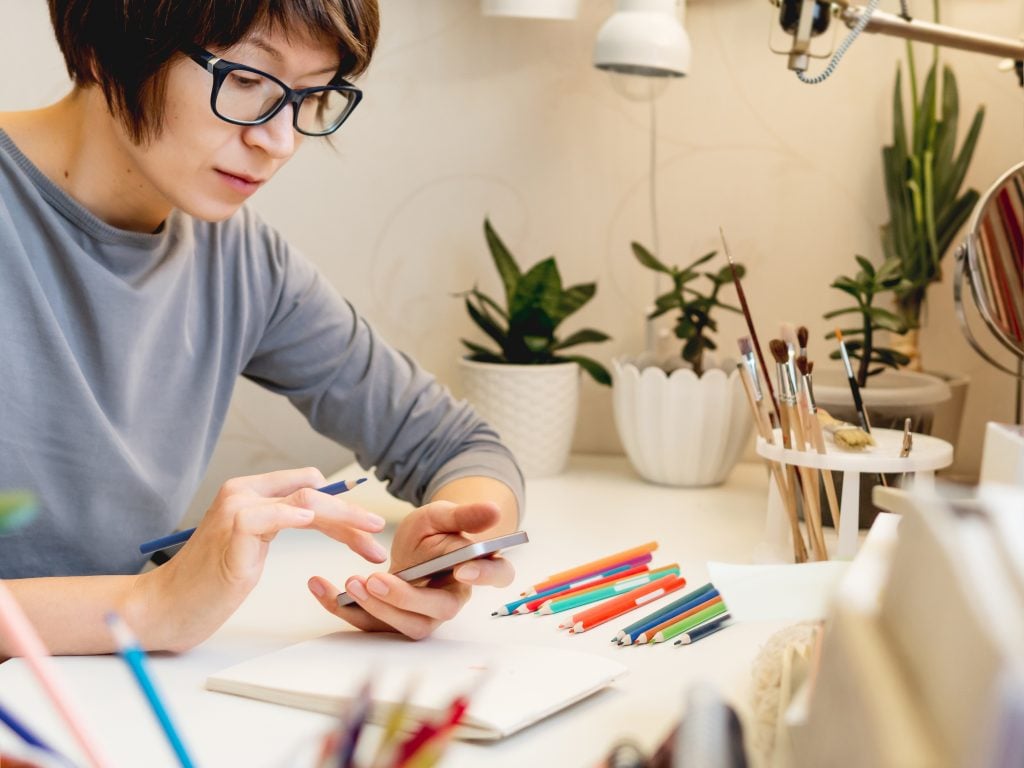
Handarbeit fördert Achtsamkeit, die Praxis, im Hier und Jetzt präsent zu sein und sich voll und ganz auf den Moment einzulassen. Diese Achtsamkeit kann die geistige Klarheit und die emotionale Stabilität deutlich verbessern.
Handarbeiten fördern die Konzentration auf die Aufgabe und lenken den Fokus ganz natürlich auf den gegenwärtigen Moment. Diese Verlagerung der Aufmerksamkeit hilft, den Geist zu beruhigen und übermäßiges Nachdenken zu reduzieren.
Materialien wie Ton, Garn und Farbe werden zu Werkzeugen der Achtsamkeit. Achten Sie beim Arbeiten mit diesen Materialien auf ihre Texturen, Farben und wie sie sich in Ihren Händen anfühlen.
Integrieren Sie achtsame Bastelpraktiken, indem Sie sich ungestörte Zeit für Ihre Projekte nehmen. Schaffen Sie sich einen ruhigen Ort, an dem Sie sich voll und ganz dem Prozess widmen können.
Versuchen Sie vor Beginn Ihrer Bastelarbeit Achtsamkeitsübungen wie tiefes Atmen oder geführte Meditation. Diese Vorbereitung kann Ihre Fähigkeit verbessern, präsent und konzentriert zu bleiben.
Verbesserte Stimmung
Handarbeit hebt nachweislich die Stimmung und fördert ein Gefühl des Glücks. Der Abschluss eines Bastelprojekts vermittelt ein Gefühl der Erfüllung und Zufriedenheit.
Das Abschließen eines Bastelprojekts vermittelt ein Gefühl der Erfüllung und des Stolzes. Diese Leistung stärkt das Selbstwertgefühl und trägt zu einer positiveren Lebenseinstellung bei.
Handarbeit regt zudem die Ausschüttung von Endorphinen an, den körpereigenen Stimmungsaufhellern. Diese „Glückshormone“ tragen dazu bei, die Stimmung zu verbessern und Traurigkeitsgefühle zu lindern.
Verwenden Sie in Ihren Projekten helle, fröhliche Farben, um die Stimmung zusätzlich zu verbessern. Lebendige Farbtöne und verspielte Muster können Ihre Laune heben und Ihren Kreationen einen Hauch von Freude verleihen.
Integrieren Sie kreatives Gestalten regelmäßig in Ihren Alltag, um Ihre positive Stimmung zu erhalten. Regelmäßige kreative Aktivitäten sorgen für ein kontinuierliches Wohlbefinden.
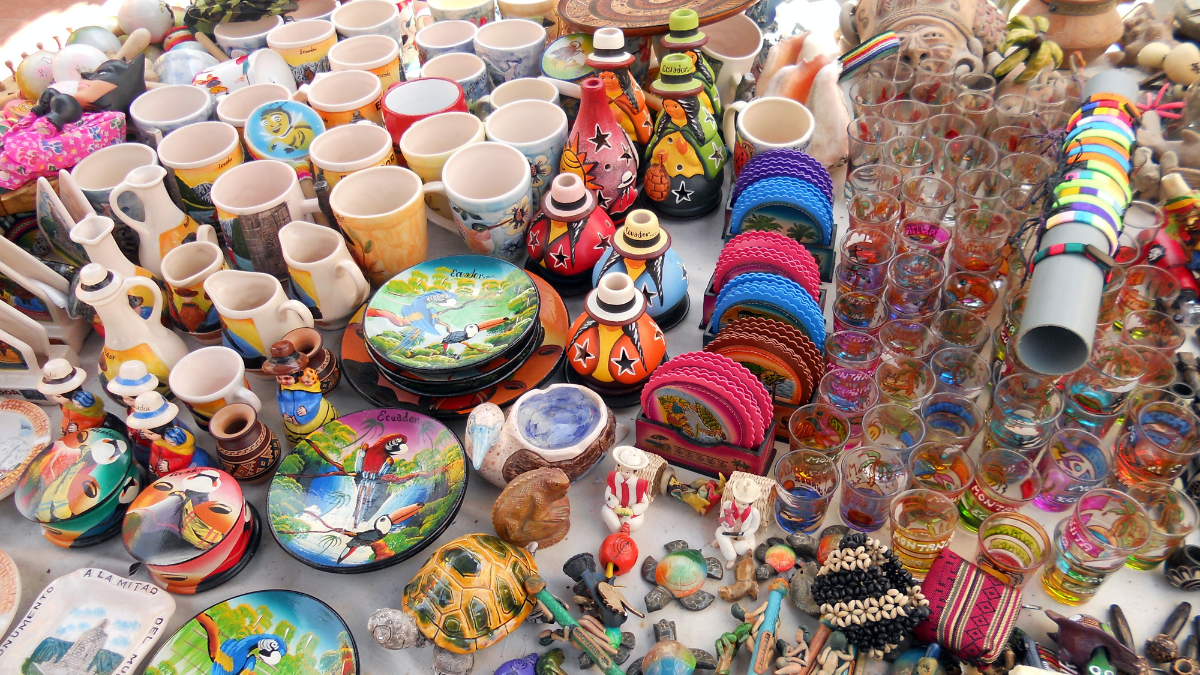
Kulturelles Kunsthandwerk
Erkunden Sie die lebendige Welt des kulturellen Kunsthandwerks. Entdecken Sie globale Kunstfertigkeit, traditionelle Techniken und einzigartiges Kunsthandwerk aus verschiedenen Kulturen.
Verbesserte kognitive Funktion
Handarbeit kann die kognitiven Funktionen durch die Anregung der Gehirnaktivität deutlich verbessern. Kreative Tätigkeiten halten den Geist aktiv und scharf und fördern die geistige Beweglichkeit.
Handarbeiten trainieren das Gehirn auf vielfältige Weise. Stricken beispielsweise fördert Mustererkennung und räumliches Denken, während Malen Problemlösungs- und kreatives Denken anregt.
Handarbeit kann besonders für ältere Erwachsene von Vorteil sein. Sie trägt zum Erhalt der kognitiven Funktionen bei und kann durch die geistige Aktivität sogar den Beginn des kognitiven Abbaus verzögern.
Probieren Sie verschiedene Handarbeiten aus, um unterschiedliche kognitive Fähigkeiten zu trainieren. Jede Handarbeit bietet einzigartige geistige Anregung, von filigraner Perlenstickerei bis hin zu komplexen Strickmustern.
Integrieren Sie regelmäßige Handarbeitsphasen in Ihren Alltag, um Ihr Gehirn aktiv und geistig fit zu halten. Die mentale Betätigung beim Handarbeiten trägt langfristig zur kognitiven Gesundheit bei.
Emotionaler Ausdruck
Handarbeit bietet ein wertvolles Ventil für den emotionalen Ausdruck. Sie ermöglicht es, Gefühle und Erfahrungen zu vermitteln, die sich verbal nur schwer artikulieren lassen.
Künstlerisches Schaffen, sei es Malen, Bildhauerei oder Nähen, bietet ein Medium, um komplexe Emotionen zu erforschen und auszudrücken. Dies kann insbesondere für Menschen, die mit Traumata oder seelischer Belastung zu kämpfen haben, eine therapeutisch wirksame Maßnahme sein.
Materialien wie Ton, Stoff oder Farbe werden zu Ausdruck Ihrer Gefühle. Während Sie mit diesen Materialien arbeiten, spiegeln Ihre Werke Ihre innere Welt wider und bieten Ihnen eine Form der Katharsis.
Für einen therapeutischen Ansatz können Sie kreatives Gestalten als Mittel nutzen, um Emotionen zu verarbeiten und loszulassen. Setzen Sie sich für Ihre Projekte Ziele, wie zum Beispiel Dankbarkeit auszudrücken oder Stress abzubauen.
Teile deine Kreationen mit anderen oder bewahre sie als persönliche Erinnerungsstücke auf. Jedes Stück wird zu einem Zeugnis deiner emotionalen Entwicklung und deines persönlichen Wachstums.
Bastelarten mit therapeutischem Nutzen
Verschiedene Handarbeitstechniken bieten unterschiedliche therapeutische Vorteile, sodass es leicht ist, die passende für Ihre Bedürfnisse zu finden. Jede Art von Handarbeit bietet einzigartige Möglichkeiten, das psychische Wohlbefinden zu fördern.
- Stricken und Häkeln: Diese sich wiederholenden Handarbeiten fördern Entspannung und Achtsamkeit. Die rhythmischen Bewegungen helfen, Stress abzubauen und die Konzentration zu verbessern.
- Malen und Zeichnen: Künstlerische Aktivitäten ermöglichen emotionalen Ausdruck und Kreativität. Sie bieten ein visuelles Ventil für Gefühle und können die Stimmung heben.
- Keramik und Skulptur: Die Arbeit mit Ton kann erdend und beruhigend wirken. Das haptische Erlebnis hilft, den Geist zu verankern und vermittelt ein Gefühl der Erfüllung.
- Holzbearbeitung und Schnitzerei: Diese handwerklichen Tätigkeiten fördern Problemlösungsfähigkeiten und verbessern die kognitiven Funktionen. Die handwerkliche Tätigkeit mit Holz bietet sowohl geistige als auch körperliche Anregung.
- Schmuckherstellung: Die Anfertigung von individuellem Schmuck ermöglicht persönlichen Ausdruck und kreative Entfaltung. Sie kann außerdem ein Erfolgsgefühl fördern und das Selbstvertrauen stärken.
Herausforderungen beim Handarbeiten als Therapie
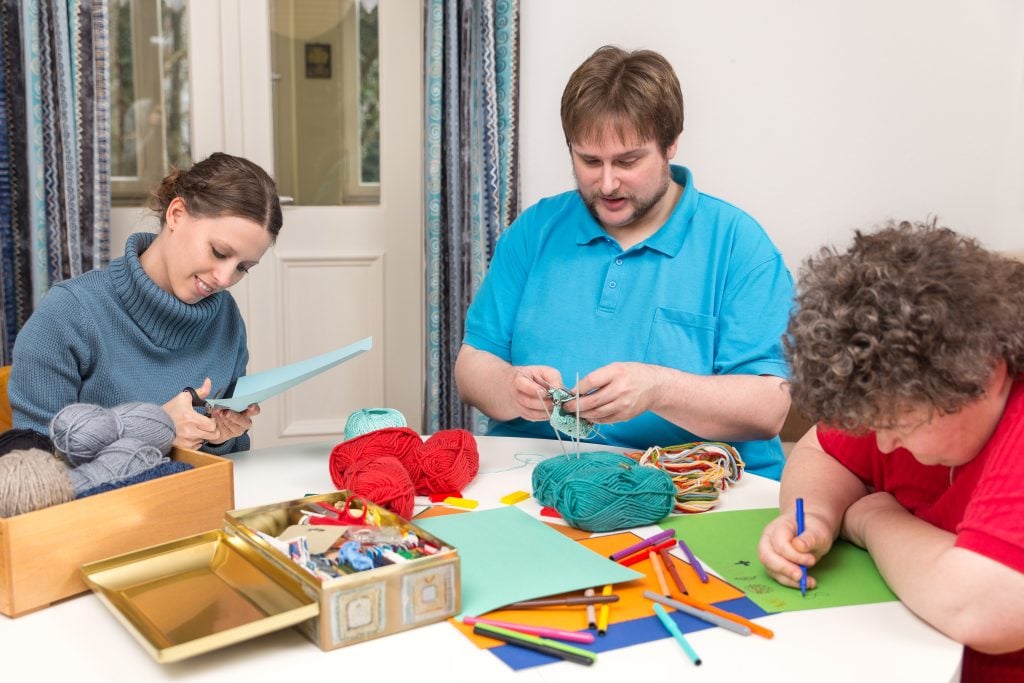
Handarbeit bietet viele Vorteile, birgt aber auch Herausforderungen. Wer diese Herausforderungen versteht, kann Hindernisse überwinden und die wohltuende Wirkung des Handwerks voll auskosten.
- Zeitliche Beschränkungen: Inmitten eines vollen Terminkalenders Zeit zum Basteln zu finden, kann schwierig sein. Nehmen Sie sich daher unbedingt Zeit für Ihr Bastelprojekt und integrieren Sie es in Ihren Alltag, um die Vorteile zu nutzen.
- Schwierigkeitsgrad: Anfänger könnten sich von komplexen Projekten überfordert fühlen. Beginnen Sie mit einfachen Bastelarbeiten und bauen Sie Ihre Fähigkeiten schrittweise aus, um Frustration zu vermeiden und die Motivation aufrechtzuerhalten.
- Materialien und Raum: Begrenzte Ressourcen oder wenig Platz können Bastelprojekte erschweren. Suchen Sie nach preisgünstigen Materialien und optimieren Sie Ihren Bastelbereich, um eine angenehme Arbeitsumgebung zu schaffen.
- Perfektionismus: Das Streben nach Perfektion kann Stress erzeugen. Um die therapeutische Wirkung voll auszuschöpfen, sollten Sie Unvollkommenheiten akzeptieren und sich auf den Prozess statt auf das Ergebnis konzentrieren.
- Konsistenz: Regelmäßiges Basteln beizubehalten, kann eine Herausforderung sein. Setzen Sie sich erreichbare Ziele und erstellen Sie einen Bastelplan, um motiviert zu bleiben und langfristig davon zu profitieren.
Handarbeit als soziale Aktivität
Handarbeiten können auch eine soziale Aktivität sein und bieten die Möglichkeit, mit anderen in Kontakt zu treten und gleichzeitig kreativ zu sein. Gemeinsames Basteln kann die therapeutische Wirkung des kreativen Schaffens verstärken.
Die Teilnahme an gemeinsamen Bastelstunden oder Workshops fördert das Gemeinschaftsgefühl und gemeinsame Erlebnisse. Diese Interaktionen bieten emotionale Unterstützung und stärken soziale Bindungen.
Bastelgruppen und -vereine vermitteln ein Gefühl der Zugehörigkeit und Kameradschaft. Der Austausch von Projekten und Ideen mit anderen kann die Motivation steigern und ein unterstützendes Netzwerk schaffen.
Online-Bastelgemeinschaften bieten zudem eine Plattform für soziale Kontakte. Der Austausch mit anderen in Foren und sozialen Medien kann Inspiration und Ermutigung bieten.
Soziale Elemente in die Bastelroutine einzubinden, bereichert das Gesamterlebnis und hilft, Gefühle der Isolation zu bekämpfen. Die Gesellschaft anderer Bastler steigert die Freude am kreativen Schaffen.
Einstieg in die therapeutische Handarbeit
Sich auf eine therapeutische Reise durch das Handarbeiten einzulassen, ist eine bereichernde Erfahrung. Beginnen Sie damit, verschiedene Handwerkskünste zu erkunden, um eines zu finden, das Ihnen zusagt und zu Ihrem Lebensstil passt.
Beginnen Sie mit einfachen Projekten, um Selbstvertrauen zu gewinnen, und steigern Sie den Schwierigkeitsgrad dann allmählich. Nehmen Sie sich ausreichend Zeit zum Basteln und schaffen Sie sich eine entspannende Arbeitsumgebung, um sich voll und ganz dem Prozess widmen zu können.
Denk daran, dass es nicht um Perfektion geht, sondern um Freude und Selbstausdruck. Genieße den Weg und nutze das Basteln, um dein geistiges und seelisches Wohlbefinden zu steigern.
Bleiben Sie Ihren handwerklichen Tätigkeiten treu und entdecken Sie neue Techniken und Materialien. Jedes Projekt bietet Ihnen die Möglichkeit, zu lernen, sich weiterzuentwickeln und zu Ihrem Wohlbefinden beizutragen.
Handarbeit hat therapeutische Vorteile, sowohl durch den Prozess selbst als auch durch die persönliche Befriedigung, etwas mit den eigenen Händen zu erschaffen.
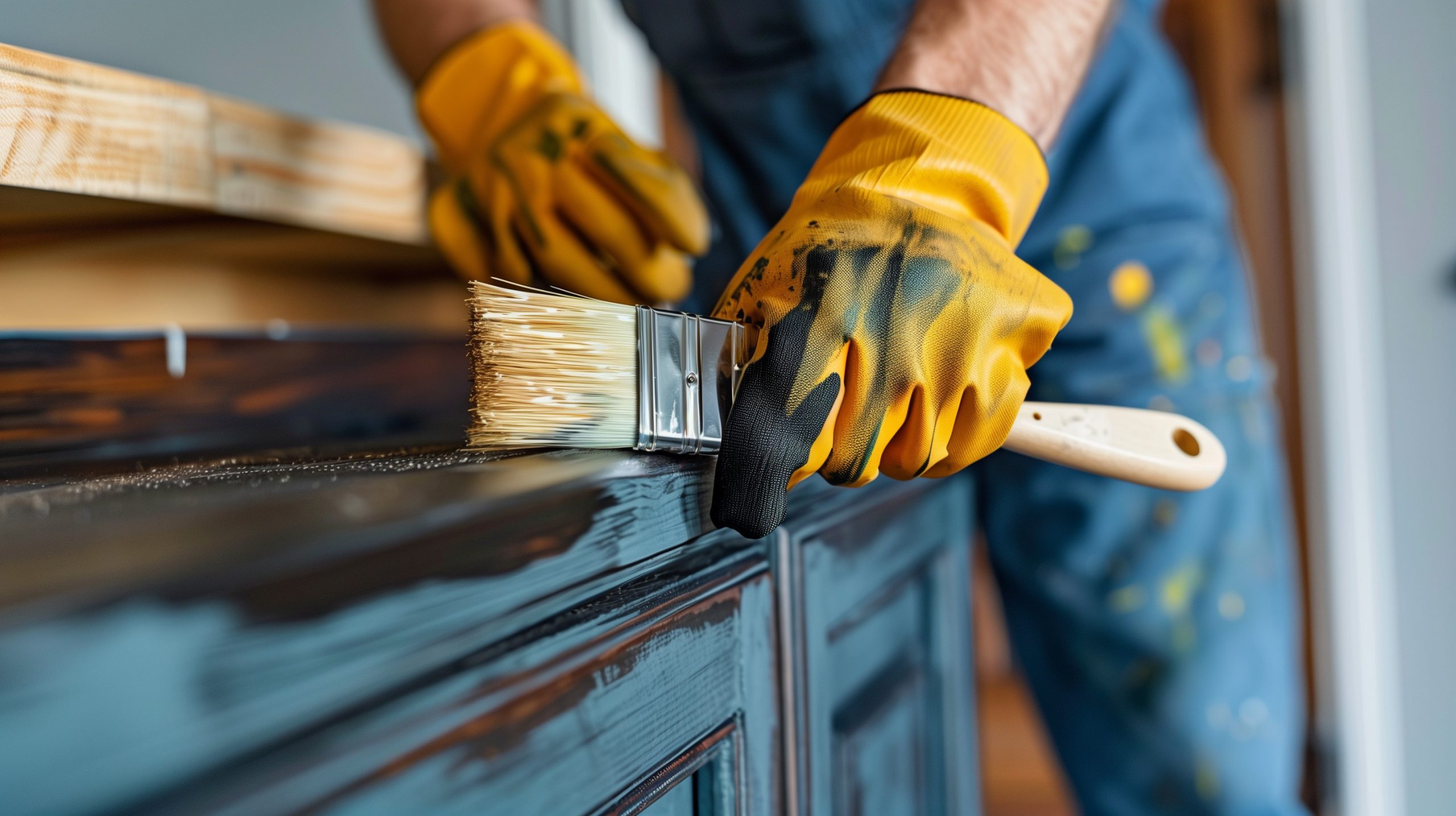
DIY-Heimdeko
Verwandeln Sie Ihr Zuhause mit DIY-Dekorationsprojekten für jeden Raum. Entdecken Sie kreative und kostengünstige Möglichkeiten, Ihren Raum mit handgefertigten Akzenten zu personalisieren.
TRENDING_TOPICS

NASCAR MOBILE: So nutzen Sie die App, um die Rennen zu verfolgen
Erleben Sie den Nervenkitzel der NASCAR-Rennen kostenlos, überall und jederzeit! Erfahren Sie alle Funktionen und die Bedienung der NASCAR Mobile App!
WeiterlesenDAS KÖNNTE IHNEN AUCH GEFALLEN

NASCAR-Rennen: Wie kann man sie verfolgen?
Erleben Sie NASCAR-Rennen live – egal wo Sie sind. Entdecken Sie die besten Streaming-Kanäle und verpassen Sie kein Rennen!
Weiterlesen
LATAM Airlines-Bewertung: Essen, Unterhaltung, Komfort und mehr an Bord!
Dieser LATAM-Testbericht nimmt Sie mit in die Kabine und bietet Ihnen einen Einblick in das Reiseerlebnis mit diesem Unternehmen. Schauen Sie es sich an!
Weiterlesen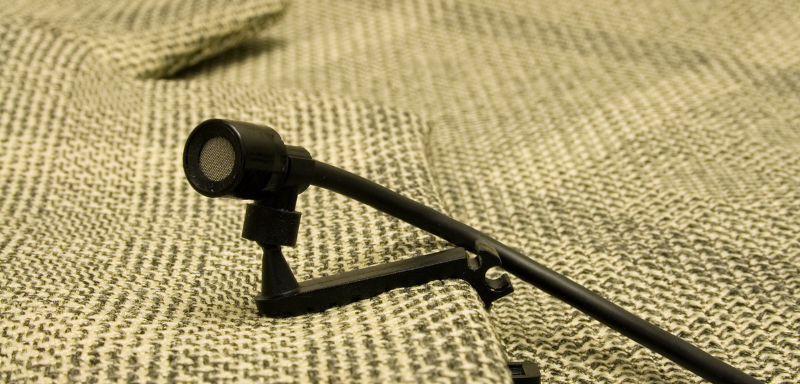
So finden Sie versteckte Mikrofone: Hier sind einige Tipps!
In diesem ausführlichen Leitfaden erfahren Sie, wie Sie versteckte Mikrofone und andere Geräte aufspüren. Entdecken Sie Tipps zum Schutz mithilfe von Apps.
Weiterlesen